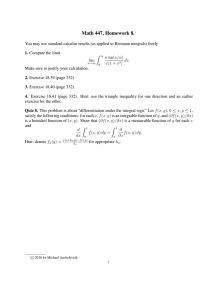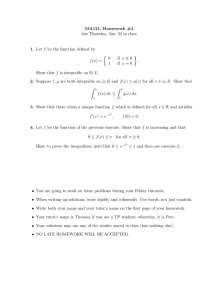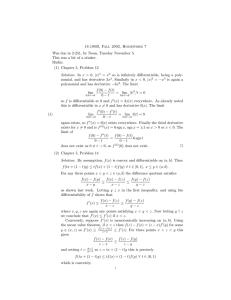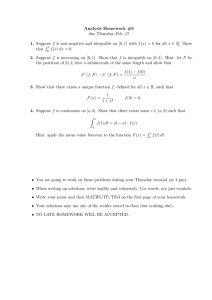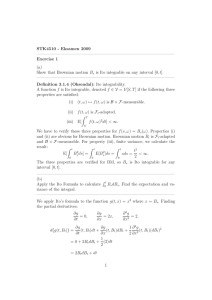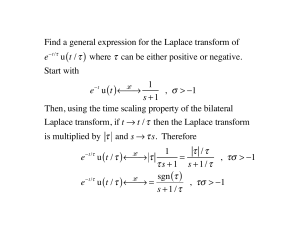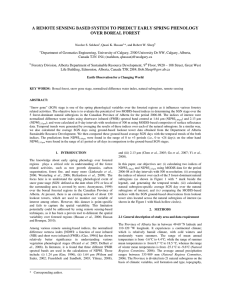Math 546 Assignment 5 (due November 26)
advertisement
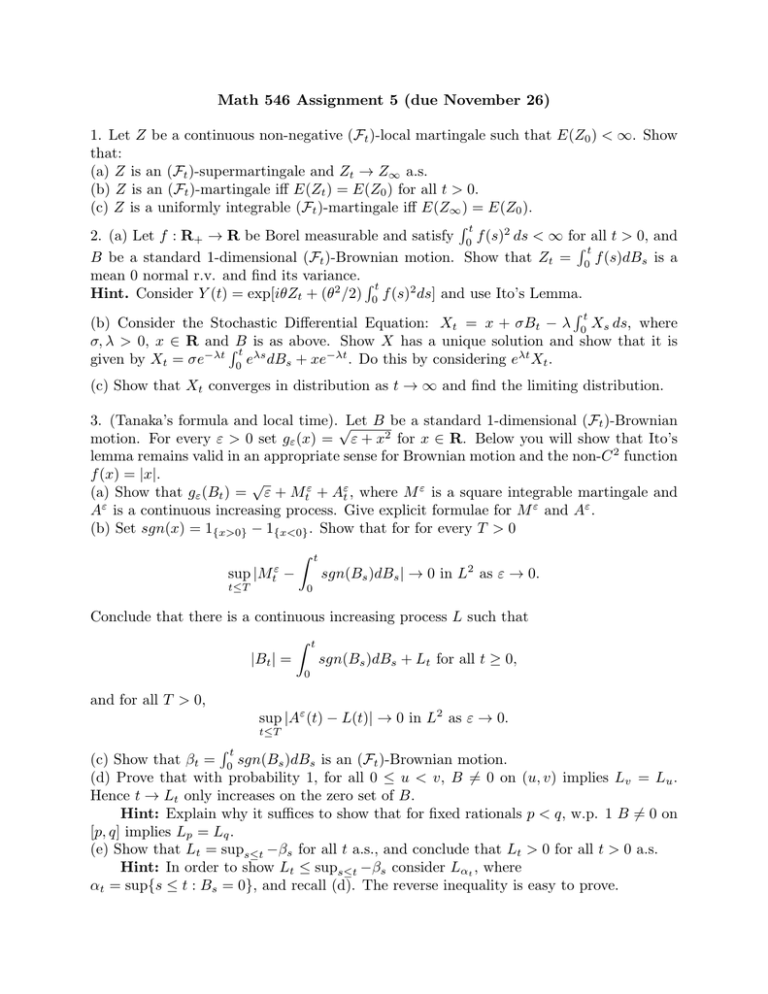
Math 546 Assignment 5 (due November 26)
1. Let Z be a continuous non-negative (Ft )-local martingale such that E(Z0 ) < ∞. Show
that:
(a) Z is an (Ft )-supermartingale and Zt → Z∞ a.s.
(b) Z is an (Ft )-martingale iff E(Zt ) = E(Z0 ) for all t > 0.
(c) Z is a uniformly integrable (Ft )-martingale iff E(Z∞ ) = E(Z0 ).
Rt
2. (a) Let f : R+ → R be Borel measurable and satisfy 0 f (s)2 ds < ∞ for all t > 0, and
Rt
B be a standard 1-dimensional (Ft )-Brownian motion. Show that Zt = 0 f (s)dBs is a
mean 0 normal r.v. and find its variance. R
t
Hint. Consider Y (t) = exp[iθZt + (θ2 /2) 0 f (s)2 ds] and use Ito’s Lemma.
Rt
(b) Consider the Stochastic Differential Equation: Xt = x + σBt − λ 0 Xs ds, where
σ, λ > 0, x ∈ R andRB is as above. Show X has a unique solution and show that it is
t
given by Xt = σe−λt 0 eλs dBs + xe−λt . Do this by considering eλt Xt .
(c) Show that Xt converges in distribution as t → ∞ and find the limiting distribution.
3. (Tanaka’s formula and local time).√Let B be a standard 1-dimensional (Ft )-Brownian
motion. For every ε > 0 set gε (x) = ε + x2 for x ∈ R. Below you will show that Ito’s
lemma remains valid in an appropriate sense for Brownian motion and the non-C 2 function
f (x) = |x|.
√
(a) Show that gε (Bt ) = ε + Mtε + Aεt , where M ε is a square integrable martingale and
Aε is a continuous increasing process. Give explicit formulae for M ε and Aε .
(b) Set sgn(x) = 1{x>0} − 1{x<0} . Show that for for every T > 0
sup |Mtε
t≤T
Z
−
t
sgn(Bs )dBs | → 0 in L2 as ε → 0.
0
Conclude that there is a continuous increasing process L such that
Z t
|Bt | =
sgn(Bs )dBs + Lt for all t ≥ 0,
0
and for all T > 0,
sup |Aε (t) − L(t)| → 0 in L2 as ε → 0.
t≤T
Rt
(c) Show that βt = 0 sgn(Bs )dBs is an (Ft )-Brownian motion.
(d) Prove that with probability 1, for all 0 ≤ u < v, B 6= 0 on (u, v) implies Lv = Lu .
Hence t → Lt only increases on the zero set of B.
Hint: Explain why it suffices to show that for fixed rationals p < q, w.p. 1 B 6= 0 on
[p, q] implies Lp = Lq .
(e) Show that Lt = sups≤t −βs for all t a.s., and conclude that Lt > 0 for all t > 0 a.s.
Hint: In order to show Lt ≤ sups≤t −βs consider Lαt , where
αt = sup{s ≤ t : Bs = 0}, and recall (d). The reverse inequality is easy to prove.
